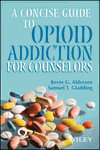I'm Here, I'm Not Participating: Student Resistance to a Group Experience
Summary
In the United States, the government's response to the opioid crisis has mostly involved expanding the availability of medication-assisted treatment (MAT). This chapter focuses on providing up-to-date information about the various choices for MAT and includes the advantages and drawbacks of each. The primary MAT consists of buprenorphine, naltrexone, or methadone. All of these drugs are themselves opioids. Naloxone is another opioid antagonist. Naloxone can be administered through a handheld auto-injector or subcutaneously. The chapter then looks at some other considerations, including overdose, post-acute withdrawal syndrome, other MAT possibilities with less supportive evidence currently, and other physical interventions. MAT does not offer a cure for opioid addiction. The objective of care in treating opioid use disorders with MAT is the management of a chronic condition.



